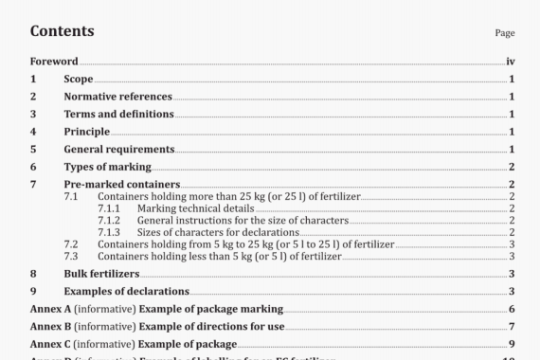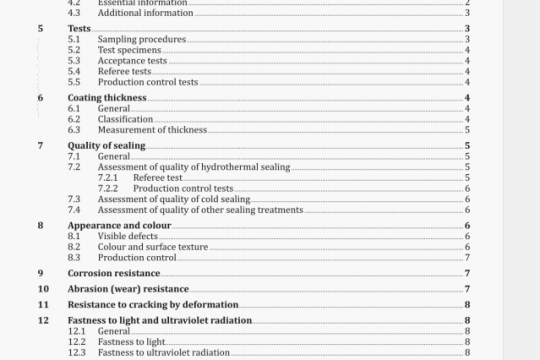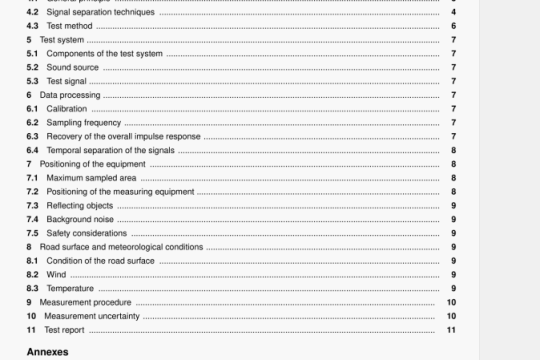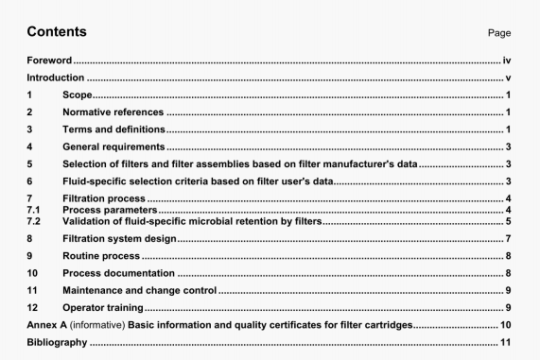ISO 12710:2002 pdf download
ISO 12710:2002 pdf download.Non-destructive testing一Ultrasonic
inspection一Evaluating electronic characteristics of ultrasonic test instruments.
5 Summary of procedure
5.1 Performance measurements
The electronic performance of each section is measured by identifying that portion of the electrical circuit of the instrument which comprises the section, applying the recommended stimulus or load or both, and performing the required measurements using commercially available electronic test equipment. These data are then summarized in tabular or graphical form as performance-related values which can be compared with corresponding values of other ultrasonic test instruments or of values for the same instrument obtained earlier (see clause 12 for a suggested reporting format).
5.2 Ultrasonic test Instruments and Interactions
5.2.1 Power supply section
The power supply section is that portion of the total instrument circuitry which supplies the regulated DC voltages
required to power all other sections of the ultrasonic test instrument, including the high voltage (i.e pulser) circuitry.
5.2.2 Pulser section
The pulser section is that portion of the total instrument circuitry that generates the electrical pulse used to energize the search unit. The pulser section may also include the pulse-shape modification controls such as pulse length, damping or tuning controls.
5.2.3 Receiver section
The receiver section is that portion of the total instrument circuitry that amplifies, or modifies or both, the radio frequency (RF) pulses received from the search unit. This includes the RF amplifiers, detectors, video amplifiers, suppression and filtering circuits, and the cathode ray tube vertical deflection circuits. Some instruments may not contain all of these circuits.
NOTE For EDAC operation, reject or threshold, although part of the receiver section, should be turned off while making measurements unless otherwise specified by the user.
5.2.4 Time base section
The time base section provides the linear horizontal sweep or baseline. It includes the horizontal deflection circuit and the clock and delay circuits which control PRF and positioning of signals on the baseline.
5.2.5 Gate/alarm section
This section monitors the signals in the receiver section to detect the presence or absence of significant indications. The gate may include attenuator or gain controls. This section is considered separate from the receiver section for the purposes of this International Standard. The alarm signal may be audible, or a mark on voltage or current sensitive paper or some combination of these. It also may be a voltage proportional to the amplitude.
6 Apparatus
6.1 Ultrasonic test Instrument, being any electronic instrument comprised of a power supply, pulser, clock, receiver and a sweep display section to generate, receive and display electrical signals related to ultrasonic waves for examination purposes.
NOTE Some ultrasonic test instruments do not include a screen display. Some sections of this International Standard may not apply to these instruments, or may be applicable only with modifications. Such modifications should be made only by personnel competent in electronics.
6.4 Pulser load, consisting of a 50 ohm non-inductive resistor, preferably mounted in a shielded coaxial
assembly, unless otherwise requested by the using parties. The resistor shall be able to withstand the maximum
peak pulser voltage. It is recommended that the complex impedance of the resistor be checked at frequencies from
100 kHz to 25 MHz in order to ensure that the magnitude is 50 ohms ± 2 ohms, and that the phase angle is less
than ± 5°.
NOTE Other impedances may be used if specified.
6.5 Spectrum analyser, of any type (with probe assembly if required) that is capable of analysing the electrical pulse from the pulser module and displaying the frequency components of the pulse as described in 8.3. A recording of the display (photograph or chart recorder) shall be included in the report.
6.6 Oscilloscope probe, being a 100 x or 50 x wide band high input impedance ( 10 k) attenuating probe to reduce the pulse amplitude, as delivered to the oscilloscope and the spectrum analyser, to a level that i) will not harm the equipment and ii) will allow for frequency and time analysis without significantly altering the pulse shape. The probe output impedance shall match the input impedance of the measurement instrument. (If the impedance is high, a terminating resistance may be required at the input to match the output impedance of the probe.) The frequency bandwidth shall be at least as wide as that of the instruments to be measured. The probe shall be able to withstand the pulser output voltage.
NOTE More than one probe may be needed to match the various test instruments used.
6.7 Function generator, capable of producing an internally or externally triggered single-cycle sine wave or five cycles of a sine wave, the frequency of which is variable over the range of the frequency capabilities of the ultrasonic test instrument to be measured. The frequency read-out shall be accurate to I %. Square or rectangular waves in single or burst mode shall be provided. The generator shall be capable of being triggered from a signal derived from the instrument clock to provide wave trains coherent with the display. An adjustable delay of at least 10 IS is required.
NOTE A free running (i.e. non-triggered) single-cycle sine wave may not be used for receiver evaluation.




